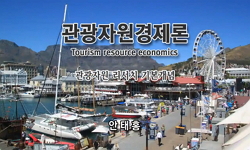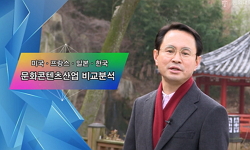The tourism relations between Korea and China have been increasing continuously. The tourism advertisement has been playing an important role for delivering travel information and destination image to the tourist. To attract more tourists for visiting...
http://chineseinput.net/에서 pinyin(병음)방식으로 중국어를 변환할 수 있습니다.
변환된 중국어를 복사하여 사용하시면 됩니다.
- 中文 을 입력하시려면 zhongwen을 입력하시고 space를누르시면됩니다.
- 北京 을 입력하시려면 beijing을 입력하시고 space를 누르시면 됩니다.
https://www.riss.kr/link?id=T12719869
- 저자
-
발행사항
서울: 경기대학교 일반대학원, 2011
-
학위논문사항
학위논문(석사) -- 경기대학교 일반대학원: 여가관광개발학과 2011.12
-
발행연도
2011
-
작성언어
한국어
- 주제어
-
발행국(도시)
서울
-
기타서명
(The)content comparison of tourism advertisement between Korea and China
-
형태사항
vi, 67장: 삽도; 26 cm.
-
일반주기명
경기대학교 논문은 저작권에 의해 보호받습니다.
지도교수 : 고동완
참고문헌 : p.56-63 - 소장기관
-
0
상세조회 -
0
다운로드
부가정보
다국어 초록 (Multilingual Abstract)
The tourism relations between Korea and China have been increasing continuously. The tourism advertisement has been playing an important role for delivering travel information and destination image to the tourist. To attract more tourists for visiting the destinations, researchers paid quite a lot of attention to the necessity of the tourism advertisement as well as the studies of how to make a successful tourism advertisement. Varied topics of tourism advertisement had been studied in the literatures, however, the study of tourism advertisement content between different countries were limited. According to the survey of the tourism advertisement in the literatures, tourism resource, tourism typology and the advertising appeal of the tourism advertisement are the most relevant building blocks of the tourism advertisement. The study gives some directions for improving the tourism advertisement by comparing the characteristics of the correlation and the difference of these advertisements between Korea and China.
The samples of the advertising films in the study were selected from the official tourism web sites of both Korea and China. There were total 29 advertising films were studied, 12 films were selected from Korea and 17 films were selected from China. The Korean advertising films were selected from the tourism web sites of 16 provincial level provinces, and the Chinese advertising films were selected from the web sites of 22 provinces, 4 direct-controlled municipalities and 5 autonomous regions.
The basic approach applied in this study is based on the theory of content analysis. The analyzing procedures can be summarized as the following three steps. First, the tourism resource, tourism typology and the advertising appeal of the tourism advertisement are analyzed by using of content analysis method. Second, do a frequency analysis of the result of the content analysis. Last, identify the difference of these three aspects by using of Chi-Square test and t-Test.
The findings of study are as following: Frist, The percentage of appearance of the tourism resource in the tourism advertisement is different between Korea and China. The result of analysis of the major tourism resource of Korean tourism advertisement is natural resource, temple, art, life style, historical interest, activities, relics, entertainment facilities and exercise. In contract, the result of China’s tourism advertisement is natural resource, historical interest, temple, customs, living, art, entertainment facilities, relics and activities. Second, There is no difference of the multiplicity analysis of the tourism typology between Korea and China’s tourism advertisement. However, the experience type tourism occupied higher appearance rate in Korea’s advertisements. In contract, the recreation type of tourism has higher appearance rate in China’s advertisements. Third, There is no apparent difference on the advertising appeal too. Both Korea and China are applying the rational appeal as the major approach. However, there is some difference on the emotional appeal. There is more warmth appeal in Korea’s advertisement, but there is more nostalgia appeal in China’s advertisement.
However, the material of this study was selected from the major provincial level official tourism web sites, the samples may not be rich enough for representing all the characteristics of the whole country. It would be better to get more tourism advertisements from the local tourism advertisements for improving the integrity of the study.
국문 초록 (Abstract)
한국과 중국 간의 관광교류는 계속해서 증가하고 있다. 양국은 관광객 유치를 위한 관광정보를 제공하고 관광광고의 필요성을 강조하고 있다. 따라서 본 연구는 한국과 중국의 관광광고를 ...
한국과 중국 간의 관광교류는 계속해서 증가하고 있다. 양국은 관광객 유치를 위한 관광정보를 제공하고 관광광고의 필요성을 강조하고 있다. 따라서 본 연구는 한국과 중국의 관광광고를 비교분석을 통해 양 국가 간의 관광광고에서 나타나는 관광자원, 관광형태, 광고소구의 특징과 차이점을 알아보고자 하였다.
본 연구는 2011년 1월부터 6월까지 중국의 각 성(省) 별로 22개 성(省)의 관광 웹 사이트와 4개 직할시(直轄市) 그리고 5개 자치구(自治區)의 관광 웹 사이트의 관광광고와 한국의 16개 광역자치단체 지역관광 웹 사이트의 관광광고를 선정하였다. 본 연구에서 표본으로 선정된 한국 관광광고는 12편, 중국 관광광고는 17편으로 총 29편이다.
본 연구의 분석은 먼저 내용분석법(content analysis)을 사용하여 한국과 중국 관광광고의 관광자원, 관광형태, 관광소구 부분에 대한 분석하였다. 다음으로 내용분석의 결과에 대한 빈도분석과 광고에서 나타나는 차이가 있는지 알아보기 위하여 -검정과 t-Test를 수행하였다.
이러한 과정을 통해 얻은 연구 결과는 다음과 같다.
첫째, 한국과 중국의 관광광고에서 나타나는 관광자원은 차이가 있는 것으로 나타났다. 한국의 관광광고는 천연자원, 사찰, 예술, 생활, 고고학적 유적, 행사, 사적, 놀이시설, 스포츠 등 순으로 사용하는 것이며, 중국의 관광광고는 천연자원, 고고학적 유적, 사찰, 풍속, 생활, 예술, 놀이시설, 사적, 행사 등 순을 사용하는 것으로 나타났다.
둘째, 한국 관광광고와 중국 관광광고에서 나타나는 관광형태의 다양성에 대해 분석한 결과 양국 간의 유의한 차이는 나타나지 않았다. 그러데 한국 관광광고에는 체험형태가 높은 비율을 차지하고 있는 반면에 중국 관광광고에서는 휴양형태가 제일 높은 비율이 나타났다.
셋째, 한국과 중국 관광광고의 소구표현방식에서는 큰 차이가 나타나지 않았다. 한국과 중국 관광광고 모두 이성적인 소구를 많이 사용하고 있다. 감성적 측면을 보면 한국 관광광고가 온정 소구를 많이 사용하고 있으며, 중국 관광광고 중에서 감성적 소구의 향수 소구 비율이 높은 것을 알 수 있다.
하지만 본 연구는 한국과 중국의 관광광고에 대한 분석방법이 주로 양적인 연구 위주로 이루어져 질적인 연구가 충분히 이루어지지 않았다는 점에서 한계가 있다.
목차 (Table of Contents)
- I.서 론 1
- A. 연구 배경 1
- B.연구 목적 3
- C.연구 범위와 방법 4
- II. 이론적 배경 5
- I.서 론 1
- A. 연구 배경 1
- B.연구 목적 3
- C.연구 범위와 방법 4
- II. 이론적 배경 5
- A. 광고 및 홍보 5
- 1. 광고 5
- 2. 홍보 7
- B.관광목적지 선택과 관광광고 8
- 1. 관광지 선택에 미치는 요인 8
- 2. 관광 광고와 홍보의 특성 11
- 3. 관광광고 소구의 유형 14
- III .연구방법 21
- A .연구문제 21
- B. 연구대상 및 자료의 수집 23
- 1. 연구대상 23
- 2. 자료수집 26
- C. 분석방법 27
- 1. 내용분석법 27
- 2. 내용분석 대상 29
- 3. 분석방법 35
- IV. 결과 및 고찰 39
- A .분석 유목의 집계 39
- B. 관광광고의 관광자원유목 비교분석 41
- C.관광광고 관광형태의 비교분석 43
- D. 관광광고 소구표현방식의 비교분석 48
- V.결 론 52
- A.연구결과 요약 52
- B.함의 및 한계 54
- 참고문헌 56
- Abstract 65









